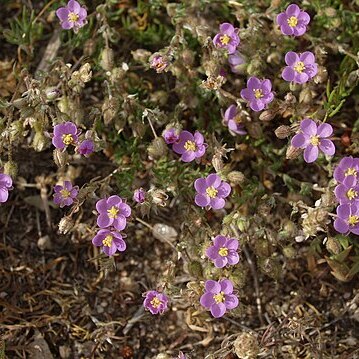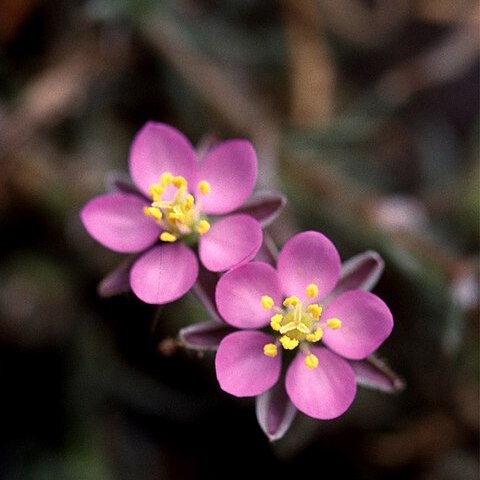Herbs, annual to perennial, glabrous to densely glandular-or eglandular-hairy, with slender or robust and woody taproot. Stem nodes swollen. Leaves opposite, linear to terete; stipules scarious, usually connate around the node. Inflorescences of compound dichasia, with branches sometimes monochasial and then appearing racemose; bracts inconspicuous. Flowers 5-merous, bisexual or rarely unisexual. Sepals 5, free or almost so. Petals white to deep pink, entire. Stamens 1–10, occasionally absent, often together with a variable number of staminodes. Ovary 1-celled; styles 3. Capsule ovoid to globose, splitting deeply into 3 valves. Seeds numerous, broadly pyriform, obliquely pyriform, lacrimiform, orbicular to trigonous, with tumid faces and margin discrete and contoured around the curved embryo and central perisperm, wingless or scariously winged, in some species with winged and wingless seeds in the same capsule; testa smooth to colliculate, sparsely to densely tuberculate or papillose.
Herbs annual or perennial. Stems erect, decumbent, or procumbent, dilated at nodes, somewhat flattened. Leaves decussate, linear; stipules pale, scarious, connate around nodes, forming ± triangular structures on either side of stem; leaf fascicles (short, leafy lateral branches) when present borne on only one side at each node. Inflorescence of racemose cymes; bracts immediately subtending calyx absent. Sepals 5, free, green, margin scarious. Petals 5, white or pink, entire. Stamens 2--5 or 10. Ovary 1-loculed; ovules numerous; styles 3. Capsule ovoid, opening by 3 valves. Seeds numerous, flat, winged or not; embryo curved.
Fls hermaphrodite or unisexual, in cymose infls. Sepals 5, free; petals 5, entire, sts 0; stamens 5-10; ovary 1-celled, ovules many, styles 3, free to base; valves of capsule 3. Annual to perennial low-growing herbs, lvs linear, opp., with pale scarious stipules. About 20 spp., cosmopolitan, mostly in saline areas.


